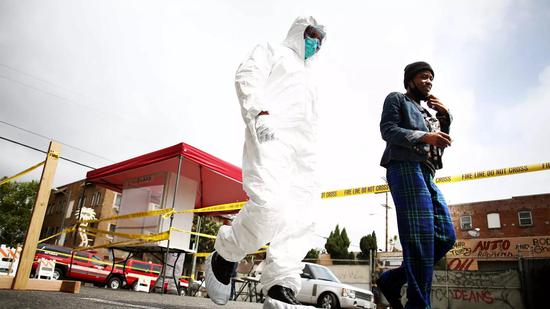Produced by: Sina Technology
Compiled by: Muir
Although the United States is not the only country that has suffered terrible consequences due to its failure to fully prepare for and respond to the pandemic, the number of confirmed cases and deaths here is indeed more than any other country in the world.
We need more detection to restore order safely, but there are still many obstacles.
After several weeks of social alienation, restricted activities and isolation, the federal government and some state governments gradually issued guidelines for reopening and restoring normal order. Virus detection is a key part, and most experts say that the United States has not done enough. In fact, it is far from enough.
When President Donald Trump just signed the latest relief bill, which allocated $25 billion for virus detection, there were still many obstacles preventing the United States from deploying the large-scale detection projects it needed. For example, there is a shortage of materials and funds - funds are still in short supply until at least $25 billion is allocated. In addition, there is no comprehensive national programme to distribute kits where they are most needed. This lack of planning can be traced back to the early days of the pandemic. At that time, the systematic failure greatly delayed the launch of the virus detection kit, making the detection capability of the United States lag behind that of other countries. For these reasons, the number of tests carried out every day in the United States has stabilized at about 150000 times a day. Experts say that we need several times more detection.
"We need not only to significantly increase the amount of detection, but also to improve the execution of detection, so that you will not be unable to do detection because you have a kit, but because you lack swabs or because you do not have extraction media or suitable reagent bottles," Dr. Anthony Fauci, director of the National Institute of Allergy and Infectious Diseases, told reporters at the end of April, "I am not very confident about our ability to do this. We have made progress, and I believe we can do it, but it is not enough now."
So, what else should we do to increase the detection volume to the level that allows the United States to begin to ease social alienation? The situation is very complicated. The available kit is not as reliable as expected, and the laboratory capacity to handle the test also needs to be increased. Most importantly, the United States needs more public health personnel to do testing and manage laboratories. Then, no doubt, it will cost a lot of money. Although these things are not impossible tasks, they are not easy.
What is the new coronavirus detection?
There are two types of COVID-19 detection: molecular detection and serum detection. Molecular detection can find the existence of viral genetic material, indicating the existence of active infection. These tests require swabs to collect samples from the nose and throat (although the good news is that the FDA recently authorized the collection of samples through the nostrils, and then there is a new test that uses only saliva.)
Serum detection is to find antibodies against the virus in the blood. The presence of antibodies indicates that there has been infection in the past. Although molecular detection of COVID-19 was widespread in early February, serum detection was not approved until April 1. Many people regard testing as a method to prove their immunity to the virus, allowing those who are tested positive to resume normal life and avoid re infection with the virus. Some countries even issue "immunization passes" to citizens who are positive according to the serum test results. But there are also some problems in serum testing: experts remind that we are not sure whether these antibodies will bring immunity, nor how long immunity can last.
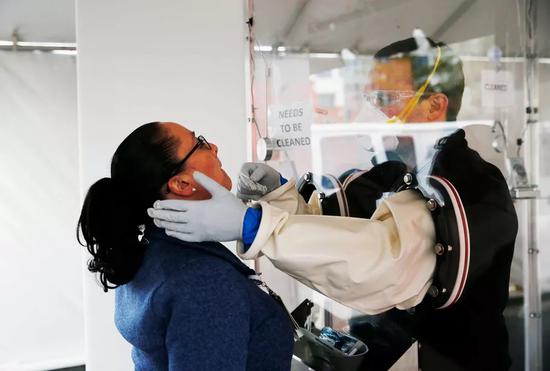 Molecular detection
Molecular detection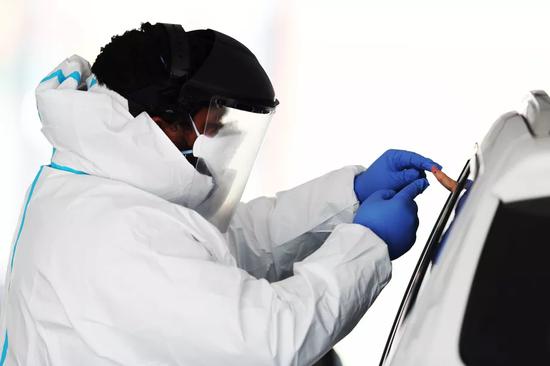 Serum test
Serum test Gary Procop, director of clinical virology and director of the Institute of Science, Technology and Public Policy of the American Society of Clinical Pathology in Zhenduo, Cleveland, said: "We don't know whether the existence of protests is related to immunization."
He added: "People want to achieve a leap of faith, but I can't do it. We won't do serum tests for influenza and other respiratory viruses. Why do we think we can use serum tests for COVID-19?"
Because the approval process of the US Food and Drug Administration (FDA) takes a long time, the detection of COVID-19 has been authorized for emergency use. As of April 24, 59 molecular tests and 4 serum tests had been authorized for emergency use. Then, there are nearly 100 kinds of tests that have not yet been authorized, but the FDA has allowed the use of these tests to complete more virus tests faster. In addition, the FDA also grants some state health departments the right to approve testing without waiting or requiring FDA authorization.
Although it is undoubtedly a good thing that tests are available, due to the lack of strict supervision of FDA and the actual tests often required by the normal approval process, there are major problems with the accuracy of some tests. On April 2, some media reported that doctors found only 70% sensitivity in some molecular tests, which meant that 30% of patients' test results were false negative. These data will improve over time. None of the tests is perfect, but ABC News reports that the sensitivity of similar molecular tests for influenza is 90% to 95%.
Another problem is that not every laboratory can run all types of kits - in fact, this is a serious problem. Therefore, even if the company's kit is surplus, the laboratory that can run this kit may not have enough capacity, while other capable laboratories do not have the materials needed to run the kit. In the words of the BBC, this is like hoping to use the parts of the Chevrolet truck on the Prius - how could it be!
In most cases, molecular detection must be carried out in the laboratory. To briefly describe the process, medical technicians prepare a sample, put it into the machine to run, and then read and interpret the results manually. The running part of the machine alone will take several hours. Plus the time for sending the kit to the laboratory, you may need to get the test results one or two days later (if there is a laboratory on site, the time can be reduced a lot). However, if the laboratory has more backlog of tests to do, the waiting time may be longer.
These factors make POCT particularly attractive. These operations can be done quickly in a few minutes where samples are collected - for example, at a drive in test point or at an emergency center. Abbott Lab's ID NOW machine can get positive results within five minutes, while Cepheid's GeneXpert can get positive results within 45 minutes. Although these tests are also molecular tests, the methods used are different from PCR tests in the laboratory. But the accuracy of real-time detection is not as high as that of PCR detection in the laboratory.
Trump introduced the ID NOW machine to the whole country at the press conference on March 29. He showed the driver size and 6.6 pound machine to everyone. In order to apply the latest instant detection solution to huge and complex global problems, the President called the detection "a new game". However, there are also some problems with this detection, such as the accuracy and usability are far lower than the initial commitment of the government.
Michael Osterholm, director of the Center for Infectious Disease Research and Policy at the University of Minnesota, said bluntly in the recent panel discussion of the "government supervision project": "The performance of these tests is terrible."
In response, Abbott Labs told reporters that as of April 19, the company had distributed 600000 kits, and added: "From the beginning, we knew what we could provide, and we also fulfilled every commitment." At present, the company produces 50000 kits every day, but the number of kits does not mean that it can run so many tests. Since the machine can only do one detection at a time, the real-time detection ability actually depends on the number of machines. (However, although the PCR detection in the laboratory runs for a long time, it can detect multiple samples at the same time.) According to the National Public Radio (NPR) of the United States, there are currently 18000 ID NOW machines in the United States. Cepheid said that there are currently 23000 GeneXpert machines in the world. Therefore, it is unrealistic to equip every workplace, school or airport entrance across the country with instant detection machines - let alone trained detection staff wearing necessary personal protective equipment.
Home testing may make things easier, but letting untrained non professionals collect samples and complete the testing process will bring another pile of problems. Many people can't even wear masks correctly. It is a bit difficult to expect them to collect samples correctly, pack them and send them back to the laboratory. For these reasons, FDA has been slow in authorizing any kit with household elements. So far, only one type of kit has been approved. This test is called LabCorp COVID-19 RT-PCR, which allows people to collect their own samples and send them back to the laboratory for processing.
"All home tests always have the problem of sample collection," Prokop said. "Are their sampling swabs deep enough into the nasal cavity?... Maybe some people only collect samples from the front of the nasal cavity, and this part of the virus basically cannot survive, which may also reduce the sensitivity of the test. However, in most cases, the situation is OK."
The test that can be carried out completely at home, without the need for trained clinicians or expensive laboratory equipment, sounds great. Some researchers believe that they can achieve this goal. The MIT Technology Review recently reported on the work done by researchers to develop such tests. The virus was completely detected at home, which was unheard of before. You can buy HIV household testing tools at the drugstore, but the test can only detect antibodies and antigens. However, the formation of antibodies and antigens takes some time, so this test will miss early cases. Moreover, it has been 30 years since people widely knew about HIV and FDA approved the household HIV testing tool.
When talking about the possibility of testing for COVID-19 entirely at home, Prokop said: "I think we still have a long way to go."
Why is the testing in the United States still insufficient?
The widespread use of virus detection kits involves a very long process, and the development of virus diagnosis and detection is only the first step in this process. After development, the kit must be manufactured, distributed and managed on a large scale as required. The following is the impact of the delay and the lack of funding and guidance from the federal government that we have seen.
Some of these problems are inevitable. For example, when the epidemic broke out at the beginning of the year, the supply chain of kits for mass production basically did not exist. Therefore, many testing companies are faced with the shortage of various materials, from swabs to reagents (chemical substances used to generate reactions required for virus detection in molecular testing). FDA is trying to help alleviate the shortage of materials by authorizing the use of other materials to replace swabs. But again, there are few alternative materials that can collect samples. FDA can only remind you that its recommendations for replacing swabs are only "based on limited existing evidence".
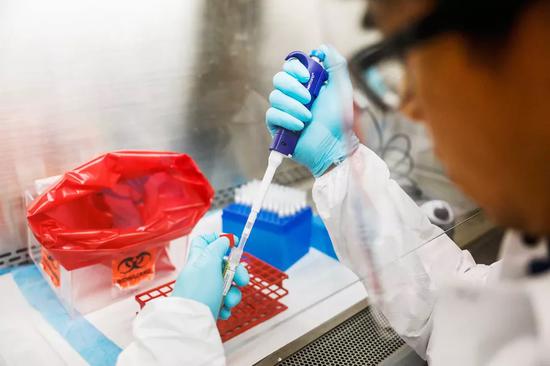 Laboratory scientists handle tests
Laboratory scientists handle tests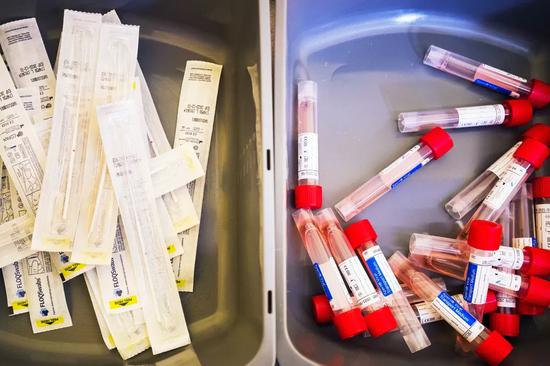 Testing material supply chain
Testing material supply chain It is more complicated to expand the scale of reagent production. These compounds include DNA components, enzymes, and salt solutions.
"Very complex biochemistry," Prokop said, "and it is obvious that companies must manufacture these reagents in a specific environment... They must manufacture this particularly complex reagent in a very controllable way."
There are signs that the detection capability is gradually improving. According to the data of COVID tracking project, 311000 tests were carried out on April 22. This is also the highest daily detection volume so far, twice the average daily detection volume in April. At that time, the daily average detection amount was about 150000 times. That is to say, on April 23, the daily inspection and measurement dropped back to about 190000 times. Therefore, whether the United States can maintain such a high detection capability is still a question.
Quest Diagnostics, one of the largest laboratory companies in the United States, told reporters that the company currently runs 50000 diagnostic tests for COVID-19 every day, and has cleared the backlog of tests that led to delayed test results.
"The capacity of the laboratory can meet the demand," Quest said. "If the demand rises, we will continue to explore solutions. Our current configuration can theoretically cope with the growing demand (depending on the actual demand growth). If we need to increase the capacity, we may introduce the detection capacity of other laboratories or try other methods."
The current testing needs may not reach the level that experts believe can reduce the need to maintain social distance. In order to reach this goal, some plans believe that 1 million to 2 million tests are needed every day; There is even a plan that requires 100 million tests every day. Scott Gottlieb, the former head of FDA under the Trump administration, once formulated a plan for the resumption of work for the American Enterprise Institute (AEI). He said that the problem of material shortage is not easy to solve, because most of the materials come from other countries - but these countries also need these materials for their own testing - and manufacturers have to spend time in the United States to configure new sources of goods:
"It will be very difficult to carry out 2 million to 3 million inspections every week. We have used the available platforms, and now we rely on the creation of new platforms and supply chains to provide resources for those platforms. Our reserve capacity is close to the upper limit. The question is, how fast can Abbott and other companies develop new inspection platforms? And how fast can LabCorp and Quest expand new labs that didn't exist before? "
Next, it is also a big problem to find enough trained personnel to run the laboratory and testing equipment.
"If we want to double or triple our testing capabilities, we need to re train our staff for these tests," said Louise Serio, a spokesman for the American Association of Clinical Laboratories (ACLA), which represents American commercial laboratories. "This may also mean that we need to hire more staff high pass In addition to the measurement platform [equipment that can run multiple samples at a time], personnel are also the key to significantly improve the detection capability. "
A medical laboratory scientist and training expert told ACLA that she has been busy training medical technicians working in the molecular testing department.
However, even if we have managed to solve all the supply problems, equipment and personnel problems, we can carry out a large number of virus tests, so that the whole country can relax the social distancing policy without endangering the health and safety of more people, we are also faced with a difficult task: distributing the kits to places and people who need them badly.
How does the United States perform compared to other countries?
Until recently, the United States still lagged behind many other countries in testing. Although President Trump said in a high profile at the beginning of March that "anyone who wants to do a test can do it", this is not the case. Trump also boasted that, Google 、 Wal-Mart 、 Target 、 Walgreens , Ryder Eide chain drugstore, CVS and other companies will cooperate with the government to make testing more convenient, but the reality is far from what was expected.
As of April 23, the United States has completed about 4.6 million virus tests, with an average daily detection volume of about 150000. However, the detection rate tends to stagnate rather than steadily increase to the level expected by experts. This may imply that the detection capability of the United States has reached its peak, and detection is still unavailable in many regions, or detection is limited to those who meet specific conditions.
The virus detection method in the United States is also problematic. At present, the positive rate of testing in the United States (the proportion of positive results in all tests) is 20%, 10 times that of South Korea. William Hanage, an epidemiologist at Harvard University, told NPR reporter that 10% or lower positive rate is a good benchmark for proper testing scheme. A high positive rate, such as the 20% positive rate in the United States, may mean that we only test people suspected of being infected with the virus, which means that many people have not been tested.
"The high positive rate of COVID-19 detection shows that our detection ability is still too low," Gottlieb said. "According to the current infection level, to reduce the positive rate to 1%, we need more than 70 million virus tests."
Therefore, the United States has caught up with some countries by leaps and bounds. At present, the number of tests per capita of our country is higher than that of South Korea. We should know that at one time, the United States was greatly behind South Korea. The United States and South Korea almost both confirmed the first case of COVID-19 on January 21. The initial response did not make much difference. But when South Korea rapidly improved its detection capability and effectively controlled the spread of the virus, the United States wasted time rejecting the detection protocol provided by the World Health Organization (WHO) and insisted on developing its own kit through the CDC. At the same time, the Trump government and some health institutions have repeatedly underestimated the threat posed by COVID-19 to the American public.
However, the kit released by the CDC is defective. Moreover, only those who meet the strict testing requirements can do the testing, and only a few laboratories licensed by the CDC can run the testing program. It was not until the end of February that FDA allowed commercial laboratories to use their own kits for virus detection, thus greatly expanding the detection capacity of the country. However, by this time, the virus had already spread everywhere. By the end of March, the per capita detection rate in South Korea was six times that in the United States. Although much better than at the beginning, the United States still lags behind many countries in terms of per capita detection rate, including Germany, Canada, Spain and Italy.
"We are not ready for the fact that like other countries, everyone can easily accept virus detection," Dr. Fauci said at the hearing on March 12, "I certainly think we should do this. But the fact is that we cannot do it."
On the contrary, South Korea and Germany are well prepared. South Korea has actively learned from the mistakes it made in dealing with the Middle East Respiratory Syndrome (MERS) in 2015, so it has a relatively complete response mechanism, including a virus contact track system that the American public probably won't accept because of its privacy risk. Before the virus invaded the country, Germany had already prepared the required kit. As of April 24, there were only 150000 confirmed cases and 5500 deaths in Germany. Germany and South Korea also have their own effective systems to track virus infected people and centralize public health care systems. None of these are in the United States.
The population of the United States is several times that of Germany and South Korea combined, which obviously worsens the shortage of testing and supply. This is a reason, but not sufficient. South Korea may have extra kits because it is providing some to the United States. Larry Hogan, the Republican governor of Maryland, still failed to obtain the test kits from American suppliers after all his efforts. Finally, he turned to South Korea and got 500000 test kits (later, Hogan specially thanked the federal government for "generously" providing the testing laboratory). In mid April, the Federal Emergency Management Agency (FEMA) purchased another 750000 kits from South Korea.
In view of the above problems, the mortality rate of the United States is still lower than that of most European countries, including the United Kingdom, Belgium, Spain, France and Italy. However, the premise is that the number of confirmed cases and deaths tracked and announced by these countries are accurate. As previously reported by the media, the actual number of COVID-19 deaths worldwide may far exceed the published figure, and the lack of detection also makes it impossible to know exactly how many confirmed cases there are.
But although the United States is not the only country that has suffered terrible consequences due to its failure to fully prepare for and respond to the pandemic, the number of confirmed cases and deaths here is indeed more than any other country in the world.
Large scale virus detection problem that cannot be solved by laboratory: money
How many virus tests do we need to do? As mentioned above, the data given by different experts are quite different. The extreme program requires that the entire population of the United States be tested for viruses every three to four days, so that patients can be isolated before the virus begins to spread.
However, the recommendation of most programs is to conduct millions of tests every day. Dr. Brett Giroir, the head of virus detection in the Trump government, called for reducing the prediction data of these programs, saying that he believed that the country needs about 4.5 million tests per month. At the same time, Ashish Jha, director of the Institute of Global Health at Harvard University, told reporters that every 100000 people should be tested at least 152 times a day (three times the current average). A recent report issued by Harvard University, the Plan for Adaptability to Pandemic, pointed out that by the beginning of June, the number of daily inspections should reach 5 million (in order to "safely reopen social activities"), and then by the middle of July, the number of daily inspections should reach 20 million (in order to "fully resume economic activities"). The report also points out that even so, the amount of detection may not be enough.
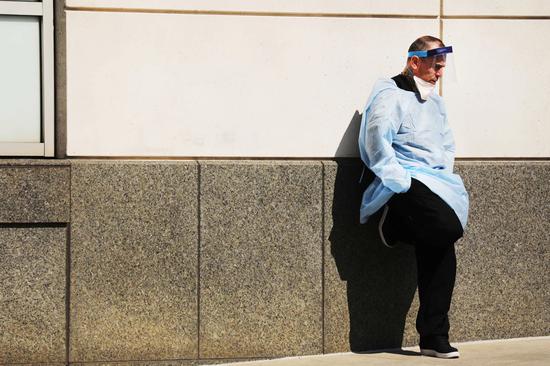
However, experts also agreed that while doing virus detection, people should not relax the tracking of contact tracks, and people should continue to maintain good health habits, maintain social distance, and consciously isolate once they feel unwell.
So, how can we expand from 150000 tests per day to millions of tests per day? Why can't we do this now? Ultimately, it's about money - not just funding so patients can do tests. We have seen that the government is paying for this part of the money. However, the national medical system also needs money to cope with huge upfront expenses, such as the purchase of machines, equipment, materials and personnel training.
Celio of ACLA said: "Everyone knows that virus detection is crucial for us to get out of the predicament, but there is a disconnect between this and the willingness of the government to invest in large commercial laboratories responsible for most virus detection."
One thing to remember is that many of these materials will not be used after the epidemic, so this is undoubtedly a bad investment for laboratories. Even the largest laboratory is under financial pressure. Although large commercial laboratories can bear the additional cost of more machines, smaller commercial laboratories cannot. Although the demand for detection of COVID-19 is still high, the overall detection is actually decreasing, because the blood routine examination for non emergency surgery or annual physical examination has been canceled these days. In view of the reduction of the overall inspection volume, Quest recently gave 4000 employees temporary leave and announced a salary reduction plan.
So, who should pay for these? Let's take the ventilator as an example to illustrate this problem more intuitively. A similar dilemma also exists for ventilators: hospitals cannot afford such expensive equipment, and after the epidemic, hospitals cannot use so many ventilators. The federal government finally spent 3 billion to purchase hundreds of thousands of respirators in the name of strategic national reserves, and then deployed them to all parts of the country according to needs.
The Trump government has been reluctant to pay for testing projects, even if the demand for testing is greater than that for respirators. Trump personally took the fight against the idea of the federal government participating in the detection project, saying it was "absurd" and still Twitter It said that "states" should "be responsible for virus detection in their own states"! At the beginning of this month, the federal government stopped funding detection sites, saying that these sites would be managed by the states themselves.
On the other hand, various states have made requests to the federal government to fund them to promote virus detection projects, including the open letter sent to Congress by the American Governors Association on April 21. Most states have a need to balance the budget, which makes it difficult or impossible for them to invest a large amount of money in the detection system immediately. At the same time, due to the suspension of business activities and unemployment of employees, the tax revenue of the states is also significantly lower than expected. But the federal government has always been unable to make ends meet. As a result, the US national debt soared.
However, the good news is that the American Medical Insurance and Medicaid Center has increased the reimbursement for COVID-19 testing from $51 to $100, hoping to encourage laboratories to invest in equipment to run more tests by increasing the subsidy for each test. The first relief bill signed in March paid for testing for patients without medical insurance. The $25 billion relief bill for new coronavirus detection also covers projects to increase detection capabilities. Once the money is in place, the federal and state governments must decide how to use and distribute it. How much of the money will really go to the laboratory is still a question.
"ACLA urges the Department of Health and Human Services (HHS) to provide details of funding allocation as soon as possible, explain how to help the severely affected areas and high-risk people, and increase efforts to increase high-throughput testing nationwide," said Julie Khani, president of ACLA in a statement, "Funding hospitals, commercial laboratories, and academic institutions to advance high-throughput testing is critical to achieving these goals."
However, the $25 billion grant was not the original version of the relief plan, but was added after a whole week of negotiations - Democrats asked to add it, while Republicans opposed it. This shows that, at present, the federal government is eager to resume the national economic activities, and it is difficult to obtain the necessary funds to handle these matters safely.
The crux lies at the top. President Trump once said that he would rather leave patients on the cruise ship (although it may infect other passengers) than let them enter the United States, because this will increase the number of confirmed cases of coronavirus. It was also reported that the President was more concerned about how to reduce the number of confirmed cases in the open, rather than trying to reduce the number of virus infections. If so, large-scale testing is obviously not in the best interests of the President, even if it is in the best interests of his country.
The national conditions are difficult. After the new coronavirus detection system in the United States encountered all these problems - develop new detection, solve supply chain problems, distribute kits to those who need them, allow more laboratories to run detection, and expand the ability of laboratories to run complex analysis and detection. Finally, the support of the federal government is needed to obtain sufficient funds to make all this work smoothly. All this means that the decision to increase testing in the United States may depend on President Trump's brain. After all, when he declared a state of emergency during the outbreak of the epidemic, when he talked about virus detection, he said without shame: "I don't take any responsibility."
By Sara Morrison
Source: https://www.vox.com/recode/2020/4/24/21229774/coronavirus-covid-19-testing-social-distancing

